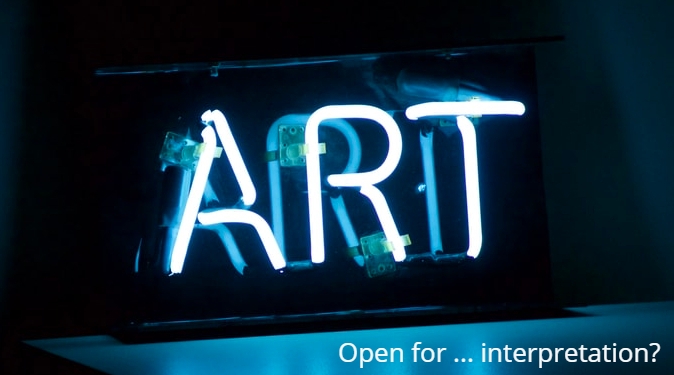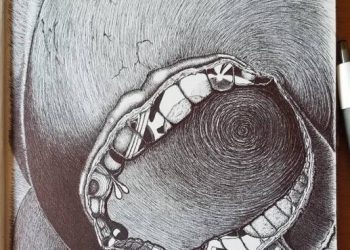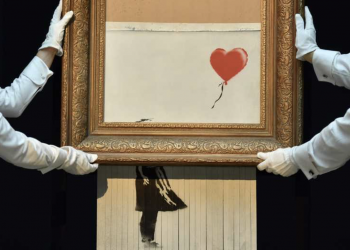“Art is in the eye of the beholder, and everyone will have their own interpretation.”
– E.A. Bucchianeri, Brushstrokes of Gadfly
Whether you are a fan of contemporary art or not there’s no denying that it is more focused on the expression itself than on beauty. For some reason, we seem to be more in touch with the controversy of it all than with aestheticism. That doesn’t have to be bad per se, but does it really reflect value in art? Once we’ve admired Sandro Botticelli and Raphael, or as in today’s modern look into art, it seems to be all about Marco Evaristti’s liposuction fat or Yoko Ono’s dirt piles.
Open interpretation vs true “art”?
Many argue that the whole popular “ugly art” scene started when Edward Munch painted his famous “The Scream” back in 1893. “The Scream” might be a grotesque painting, but it doesn’t strike you with its aesthetics as it does through the feeling it evokes.
The same could be said for Picasso’s “Demoiselles d’ Avignon” from 1907. If one compares these two “ugly” paintings with what Metropolitan Museum is showcasing today, they would probably look gorgeous. Yet, on the same note, can art really be ugly if there is thought behind it? If we challenge our definition of art, the answer changes with it.
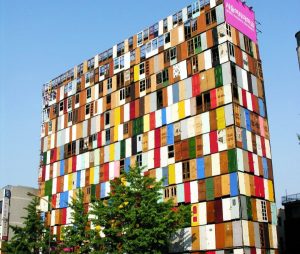
Artists like Choi Jeong-Hwa and El Anatsui manage to make some of the most beautiful artwork out of someone else’s garbage. While some traditionalists would say that the so-called “garbage art” art lacks artistic value, millions of people from around the world beg to differ. This just goes to show that the old proverb often said, “one man’s trash really is another man’s treasure” is still true to this day.
Expression through the discarded
There is something truly noble and humbling in creating artwork from a discarded and seemingly ugly object. We’ve all admired the metamorphosis of tech-junk into amazing mosaics and incredible installations made of recycled plastic. The fact that we take all this discarded plastic that can afflict the land, oceans, and waterways for hundreds of years and use it as artwork becomes even more significant and meaningful.
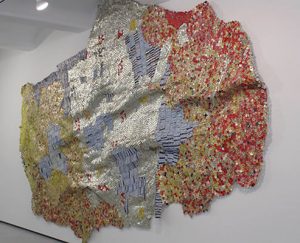
Electronic junk is also a type of highly damaging waste that needs to be dealt with. We don’t think much when we throw away our old phones and get the latest new-generation tech or systems that we apply to our old computers, TV sets, etc. Any lead, tin, mercury or barium residue derived from that particular waste will be leaching into the ground, tainting the environment for decades to come. Why not recycle it and keep it in a controlled environment? Actually, why not use it beautifully?
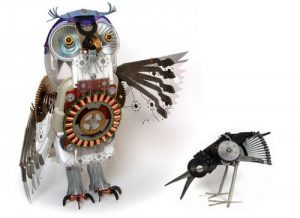
Inspiration can be found in anything, anywhere, by anyone
To show my point, I present my favorite artist when it comes to so-called “junk art”, Elisa NaranjaMetalicaInsua. Star Wars fans among you probably already know why. Elisa Insua created arguably one of the most famous pop mosaics -the one and only Dark Lord of the Sith, Darth Vader.
Insua shaped Vader out of recycled electronics and this actually makes him look even more impressive. Constructed from bits and pieces of gadgets like his Tetris left shoulder, tech-junk Vader inspires power and still intimidates. Elisa Insua is a young Argentinian artist known for her colorful tech artwork and, unlike many of her peers, she is self-taught. This isn’t an artist who polished her craft in Pomona or Pratt, and every piece she makes perfectly reflects her pure talent and skill, completely and entirely.
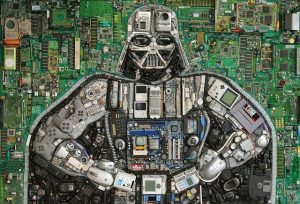
If you look at the art of today you might rightfully say that it is ugly compared to the artwork from the renaissance and impressionistic era. On the other hand, what does “ugly” really mean? Jeff Koons’s “Balloon Dog” was called “ugly” and “weird” by many, but it was still sold for a whopping $58.4 million at Christie’s. We mustn’t forget that we live in a world full of zealous political correctness where calling someone “ugly” can be considered hate speech but that in contrast, many artists use their artwork as the reflection of their inner being, their authentic self.
Beauty truly is in the eye of the beholder
As one of my all-time favorite painters Tom Wilson once said: “My art is a continuation of my long way home.” So, who are we to judge? Who are we to dub someone’s spiritual and artistic effort “ugly”? Ask yourself that the next time you decide to be vocal about the appearance of someone’s artistic expression and as you are, remember that art is a language we can all share, richly interpreted in ways that defy the regular conventions of (hu)man.


